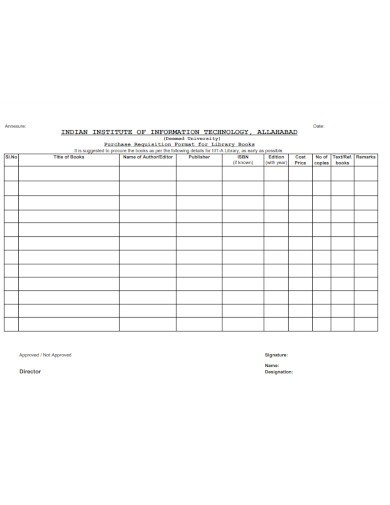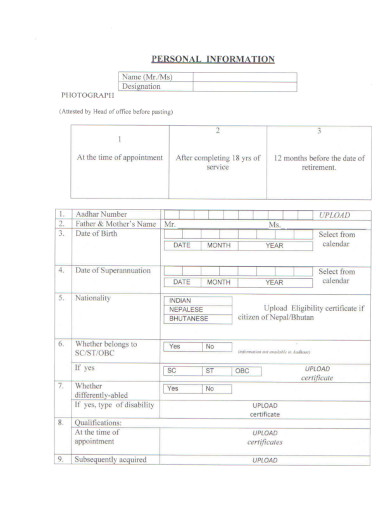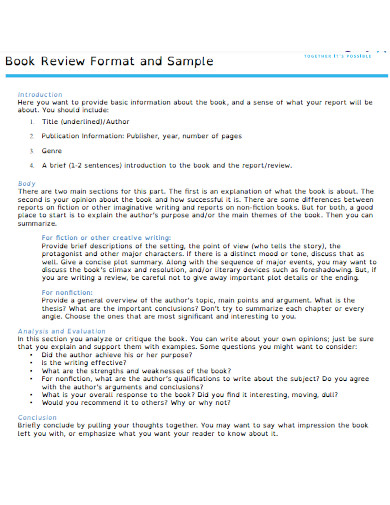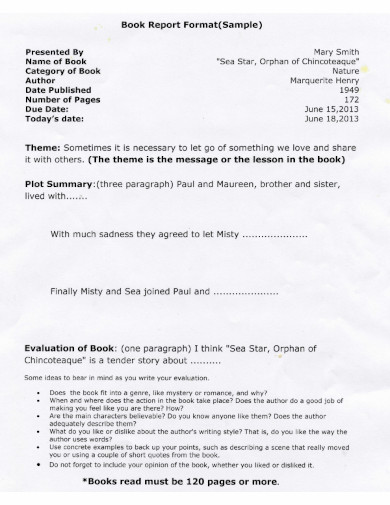60+ Book Examples
Books offer a gateway to learning about the world, no matter the genre. They expand our knowledge, provide fresh perspectives, and ignite our imaginations. Beyond their educational value, books are also a prime source of entertainment, transporting readers to different worlds and times. Whether through thrilling adventures, heartfelt dramas, or enlightening non-fiction, books remain one of the most enriching ways to spend one’s time.
What Is a Book?
A book is a handwritten or printed work of fiction and non-fiction that has pages bound to a cover. These books can be bought from bookstores and borrowed from public libraries. Through the use of book requisitions, you may borrow books from public libraries for free. If you want
History of Books
The history of books is a fascinating journey through time, reflecting the evolution of human communication, knowledge preservation, and cultural development.
1. Ancient Beginnings
- Cuneiform Tablets: Around 3400 BCE, the Sumerians in Mesopotamia used clay tablets inscribed with cuneiform script, one of the earliest forms of writing.
- Egyptian Papyrus: By 3000 BCE, Egyptians began using papyrus, a plant-based material, to create scrolls. These scrolls were used for religious texts, literature, and administrative documents.
2. Classical Antiquity
- Greek and Roman Contributions: In ancient Greece and Rome, books took the form of papyrus scrolls and later parchment codices. The transition from scroll to codex (a book with pages) around the 1st century CE revolutionized the way information was accessed and stored.
- Library of Alexandria: One of the most famous libraries of the ancient world, the Library of Alexandria, housed a vast collection of scrolls and was a hub of scholarly activity.
3. The Medieval Period
- Manuscript Culture: During the Middle Ages, books were meticulously hand-copied by monks in scriptoria. These illuminated manuscripts, often adorned with intricate decorations, were primarily religious texts but also included works on science, philosophy, and literature.
- Vellum and Parchment: Animal skins were used to create vellum and parchment, which were more durable than papyrus.
4. The Renaissance and the Printing Revolution
- Gutenberg’s Printing Press: In 1455, Johannes Gutenberg invented the movable type printing press, which revolutionized book production. The Gutenberg Bible was the first major book printed using this technology.
- Mass Production: The printing press enabled the mass production of books, making them more accessible and affordable. This led to an explosion of knowledge and literacy during the Renaissance.
5. Modern Era
- Industrial Revolution: Advances in printing technology during the 19th century, such as the steam-powered press, further increased the efficiency and speed of book production.
- Paperbacks and Mass-Market Books: The introduction of paperbacks in the 20th century made books even more affordable and portable, reaching a wider audience.
6. Digital Age
- E-books and Audiobooks: The advent of digital technology has transformed the book industry once again. E-books and abooks offer new ways to consume literature, providing convenience and accessibility to readers worldwide.
- Self-Publishing: Digital platforms have democratized publishing, allowing authors to bypass traditional publishing routes and reach readers directly.
Examples of Book for Students
Books play a crucial role in education and personal development. Here are the top book examples that are highly recommended for students across different age groups:
1. “Harry Potter and the Sorcerer’s Stone” by J.K. Rowling
A magical adventure that introduces Harry Potter, a young wizard, and his journey at Hogwarts School of Witchcraft and Wizardry.
2. “To Kill a Mockingbird” by Harper Lee
A powerful novel exploring themes of racial injustice, moral growth, and compassion through the eyes of Scout Finch in the American South.
3. “Charlotte’s Web” by E.B. White
A heartwarming story about the friendship between a pig named Wilbur and a spider named Charlotte, who saves him from being slaughtered.
4. “Matilda” by Roald Dahl
The story of a brilliant young girl with extraordinary powers who overcomes obstacles posed by her neglectful parents and a tyrannical headmistress.
5. “The Giver” by Lois Lowry
A thought-provoking dystopian novel about a boy named Jonas who uncovers the dark secrets of his seemingly perfect society.
6. “Wonder” by R.J. Palacio
An inspiring tale of Auggie Pullman, a boy with a facial difference, navigating school and teaching others about empathy and kindness.
7. “The Catcher in the Rye” by J.D. Salinger
The story of Holden Caulfield, a teenager facing alienation and existential angst in post-war New York City.
8. “Percy Jackson & The Olympians: The Lightning Thief” by Rick Riordan
A thrilling adventure where Percy Jackson discovers he is a demigod and embarks on a quest to prevent a war among the gods.
9. “The Great Gatsby” by F. Scott Fitzgerald
A classic novel about the American Dream and the disillusionment of the Jazz Age, centered on the mysterious Jay Gatsby and his unrequited love for Daisy Buchanan.
10. “The Hunger Games” by Suzanne Collins
A gripping dystopian story where Katniss Everdeen volunteers to take her sister’s place in a deadly televised competition, fighting for survival and freedom.
Fiction Book Examples
1. “To Kill a Mockingbird” by Harper Lee
A powerful exploration of racial injustice and moral growth in the American South, seen through the eyes of young Scout Finch.
2. “1984” by George Orwell
A dystopian novel that delves into the dangers of totalitarianism, surveillance, and oppressive regimes.
3. “Pride and Prejudice” by Jane Austen
A timeless romance that explores themes of social class, marriage, and morality through the story of Elizabeth Bennet and Mr. Darcy.
4. “The Great Gatsby” by F. Scott Fitzgerald
A classic tale of the American Dream, wealth, and love, set in the glamorous Jazz Age and centered on the enigmatic Jay Gatsby.
5. “The Catcher in the Rye” by J.D. Salinger
The story of Holden Caulfield, a teenager navigating the challenges of adolescence and alienation in post-war New York City.
6. “Harry Potter and the Sorcerer’s Stone” by J.K. Rowling
The beginning of Harry Potter’s magical journey at Hogwarts School of Witchcraft and Wizardry, introducing readers to a world of magic and adventure.
7. “The Lord of the Rings” by J.R.R. Tolkien
An epic fantasy saga about the quest to destroy the One Ring and defeat the dark lord Sauron, featuring richly imagined worlds and characters.
8. “The Kite Runner” by Khaled Hosseini
A moving story of friendship, redemption, and the complex relationships between fathers and sons, set against the backdrop of a changing Afghanistan.
9. “The Alchemist” by Paulo Coelho
A philosophical novel about a shepherd named Santiago and his journey to discover his personal legend and true purpose in life.
10. “Beloved” by Toni Morrison
A haunting and powerful narrative about the impact of slavery on a woman named Sethe and her struggle to come to terms with her past.
Examples of Book for Science Fiction
Science fiction books explore futuristic concepts, advanced technology, space exploration, and speculative ideas that stretch the imagination. Here are some highly recommended science fiction books:
1. “Dune” by Frank Herbert
A classic novel set on the desert planet Arrakis, focusing on politics, religion, and the struggle for control over the vital spice melange. It is a profound exploration of power, survival, and the human spirit.
2. “Neuromancer” by William Gibson
A seminal work in the cyberpunk genre, this novel explores themes of artificial intelligence, virtual reality, and corporate espionage in a gritty, high-tech future.
3. “The Left Hand of Darkness” by Ursula K. Le Guin
This groundbreaking novel examines gender and society through the story of a human envoy to a planet where inhabitants can change their gender.
4. “Foundation” by Isaac Asimov
The first book in Asimov’s epic series, “Foundation” explores the fall of a Galactic Empire and the efforts of a group of scientists to preserve knowledge and shorten the ensuing dark age.
5. “Ender’s Game” by Orson Scott Card
A thrilling tale of a young boy, Ender Wiggin, who is trained through simulated war games to lead humanity in a battle against an alien race.
6. “Snow Crash” by Neal Stephenson
A fast-paced cyberpunk novel that explores a future America dominated by corporate-controlled city-states and the impact of a virtual reality drug called Snow Crash.
7. “The Martian” by Andy Weir
A gripping survival story of an astronaut stranded on Mars, who uses his ingenuity and determination to survive while awaiting rescue.
8. “Brave New World” by Aldous Huxley
A dystopian vision of a future society driven by technological advancements, genetic engineering, and a loss of individuality.
9. “Hyperion” by Dan Simmons
The first book in the “Hyperion Cantos” series, it follows seven pilgrims on a journey to the distant world of Hyperion, each with their own tale of mystery and intrigue.
10. “The Three-Body Problem” by Liu Cixin
A hard science fiction novel that delves into first contact with an alien civilization and the complex, multi-layered consequences of that encounter.
Examples of Book for Historical Fiction
Historical fiction books blend historical facts with fictional narratives, bringing past events and eras to life through compelling storytelling. Here are some highly recommended historical fiction books:
1. “The Book Thief” by Markus Zusak
Set in Nazi Germany, this novel tells the story of Liesel Meminger, a young girl who finds solace in stealing books and sharing them with others during the horrors of World War II.
2. “All the Light We Cannot See” by Anthony Doerr
The parallel stories of a blind French girl and a German soldier during World War II, exploring themes of survival, resilience, and the impact of war.
3. “The Nightingale” by Kristin Hannah
The story of two French sisters and their struggle to survive and resist the Nazi occupation of France during World War II.
4. “The Help” by Kathryn Stockett
Set in the 1960s in Jackson, Mississippi, this novel explores the lives of African American maids working for white families, and the young white woman who writes a book from their perspective.
5. “Memoirs of a Geisha” by Arthur Golden
The fictional story of a young girl in 1920s Japan who is sold to a geisha house and her journey to becoming one of the most celebrated geishas in Kyoto.
6. “The Pillars of the Earth” by Ken Follett
A sweeping epic set in 12th-century England, focusing on the construction of a cathedral in the fictional town of Kingsbridge and the lives of the people involved.
7. “Wolf Hall” by Hilary Mantel
A detailed portrayal of Thomas Cromwell’s rise to power in the court of King Henry VIII, exploring the political intrigue and personal ambition of the period.
8. “Outlander” by Diana Gabaldon
A time-travel romance where a World War II nurse is transported back to 18th-century Scotland and falls in love with a Highland warrior, blending historical events with adventure and romance.
9. “Girl with a Pearl Earring” by Tracy Chevalier
A fictional account of the creation of Vermeer’s famous painting, focusing on the relationship between the painter and his young maid, Griet, in 17th-century Delft.
10. “A Tale of Two Cities” by Charles Dickens
Set during the French Revolution, this classic novel explores the lives of individuals caught up in the tumultuous events of the time, focusing on themes of sacrifice, justice, and redemption.
Book Examples of Drama
Drama books delve into complex characters, emotional conflicts, and thought-provoking themes. They often explore the human condition and relationships in depth. Here are some highly recommended drama books:
1. “To Kill a Mockingbird” by Harper Lee
A profound story set in the American South, exploring themes of racial injustice and moral growth through the eyes of young Scout Finch.
2. “A Thousand Splendid Suns” by Khaled Hosseini
A powerful narrative about the lives of two Afghan women and their struggles amid the turmoil of war and oppression.
3. “The Kite Runner” by Khaled Hosseini
A poignant tale of friendship, betrayal, and redemption set against the backdrop of a changing Afghanistan.
4. “Beloved” by Toni Morrison
A haunting story about the impact of slavery on a woman named Sethe and her family, exploring themes of memory and trauma.
5. “The Great Gatsby” by F. Scott Fitzgerald
A classic novel about the American Dream and the disillusionment of the Jazz Age, centered on the enigmatic Jay Gatsby.
6. “Of Mice and Men” by John Steinbeck
The tragic story of two displaced ranch workers during the Great Depression, exploring themes of friendship, dreams, and isolation.
7. “The Road” by Cormac McCarthy
A bleak yet moving tale of a father and son’s journey through a post-apocalyptic world, highlighting their struggle for survival and hope.
8. “The Catcher in the Rye” by J.D. Salinger
The story of Holden Caulfield, a teenager grappling with alienation and the challenges of adolescence in post-war New York City.
9. “Jane Eyre” by Charlotte Brontë
A coming-of-age story that follows the life of an orphaned girl, Jane Eyre, as she faces various hardships and discovers love and independence.
10. “Room” by Emma Donoghue
A gripping tale of a young boy and his mother held captive in a small room, and their subsequent escape and adjustment to the outside world.
Examples of Book for Fantasy
Fantasy books transport readers to magical worlds, filled with enchanting creatures, epic quests, and powerful sorcery. Here are some highly recommended fantasy books:
1. “Harry Potter and the Sorcerer’s Stone” by J.K. Rowling
The beginning of Harry Potter’s magical journey at Hogwarts School of Witchcraft and Wizardry, introducing readers to a world of magic and adventure.
2. “The Hobbit” by J.R.R. Tolkien
The adventures of Bilbo Baggins as he joins a group of dwarves on a quest to reclaim their homeland from the dragon Smaug.
3. “The Name of the Wind” by Patrick Rothfuss
The story of Kvothe, a legendary figure who recounts his life’s journey from a young orphan to a renowned hero and musician.
4. “A Game of Thrones” by George R.R. Martin
The first book in the “A Song of Ice and Fire” series, featuring a complex web of political intrigue, war, and power struggles in the fictional continents of Westeros and Essos.
5. “The Chronicles of Narnia: The Lion, the Witch and the Wardrobe” by C.S. Lewis
Four siblings discover a magical land called Narnia, where they must help Aslan the lion defeat the White Witch and restore peace.
6. “Mistborn: The Final Empire” by Brandon Sanderson
In a world where ash falls from the sky and mist dominates the night, a young street urchin discovers her magical powers and joins a group planning to overthrow the immortal Lord Ruler.
7. “The Golden Compass” by Philip Pullman
The first book in the “His Dark Materials” series, following Lyra Belacqua as she travels to the Arctic in search of kidnapped children and uncovers a sinister plot.
8. “Eragon” by Christopher Paolini
A young farm boy discovers a dragon egg, marking the beginning of his journey as a Dragon Rider destined to fight against the evil king Galbatorix.
9. “The Priory of the Orange Tree” by Samantha Shannon
An epic standalone fantasy novel featuring a divided world, powerful dragons, and a queen who must conceive an heir to protect her realm from an ancient enemy.
10. “The Wheel of Time: The Eye of the World” by Robert Jordan
The first book in a sprawling epic fantasy series, where a young man named Rand al’Thor discovers he is destined to fight the Dark One and save the world.
More Samples & Formats of the Book in PDF
1. Book Requisition Format
2. Service Book Format
3. Book Writing Proposal Format
4. Book Review Format
5. Sample Book Report Format
Types of Books
Books come in a wide variety of genres, each offering unique experiences and catering to different interests. Here are some common types of books:
1. Fiction
Fiction books are created from the imagination and include a variety of subgenres:
- Literary Fiction: Focuses on character development and themes, often with a deeper meaning.
- Science Fiction: Explores futuristic concepts, advanced technology, and space exploration.
Example: “Dune” by Frank Herbert.
- Fantasy: Features magical elements, mythical creatures, and fantastical worlds.
Example: “Harry Potter and the Sorcerer’s Stone” by J.K. Rowling.
- Mystery: Involves solving a crime or unraveling secrets.
Example: “The Girl with the Dragon Tattoo” by Stieg Larsson.
- Thriller: Provides suspense and excitement, often with high stakes.
Example: “Gone Girl” by Gillian Flynn.
- Romance: Centers around love stories and relationships.
Example: “Pride and Prejudice” by Jane Austen.
- Horror: Designed to frighten and unsettle readers.
Example: “The Shining” by Stephen King.
- Historical Fiction: Set in a specific historical period, blending real events with fictional characters.
Example: “The Book Thief” by Markus Zusak.
2. Non-Fiction
Non-fiction books provide factual information and real-life accounts:
- Biographies: Detailed accounts of a person’s life.
Example: “Steve Jobs” by Walter Isaacson.
- Autobiographies: Life stories written by the subjects themselves.
Example: “The Diary of a Young Girl” by Anne Frank.
- Memoirs: Personal accounts focusing on specific experiences.
Example: “Educated” by Tara Westover.
- Self-Help: Guides for personal improvement and development.
Example: “The 7 Habits of Highly Effective People” by Stephen R. Covey.
- History: Chronicles historical events and periods.
Example: “Sapiens: A Brief History of Humankind” by Yuval Noah Harari.
- Science: Explains scientific concepts and discoveries.
Example: “A Brief History of Time” by Stephen Hawking.
- Travel: Narratives and guides about exploring different places.
Example: “In Patagonia” by Bruce Chatwin.
- Cookbooks: Collections of recipes and culinary techniques.
Example: “Mastering the Art of French Cooking” by Julia Child.
3. Children’s Books
Books designed for young readers, often with illustrations and simple language:
- Picture Books: Short stories with illustrations for young children.
Example: “Where the Wild Things Are” by Maurice Sendak.
- Early Readers: Simple texts for children learning to read.
Example: “Green Eggs and Ham” by Dr. Seuss.
- Chapter Books: Longer stories for early elementary readers.
Example: “Charlotte’s Web” by E.B. White.
- Middle Grade: Books for pre-teens with more complex stories.
Example: “Percy Jackson & The Olympians: The Lightning Thief” by Rick Riordan.
- Young Adult (YA): Targeted at teenagers, often dealing with coming-of-age themes.
Example: “The Hunger Games” by Suzanne Collins.
4. Educational Books
Books used for learning and academic purposes:
- Textbooks: Comprehensive guides on specific subjects, used in schools and colleges.
Example: “Campbell Biology” by Lisa A. Urry et al.
- Reference Books: Sources of factual information, such as dictionaries and encyclopedias.
Example: “Merriam-Webster’s Collegiate Dictionary.”
- Workbooks: Practice books with exercises and activities.
Example: “Math Skills for Grade 3” by Sylvan Learning.
- Manuals: Instructional books on how to do or use something.
Example: “The Chicago Manual of Style.”
Parts of a Book
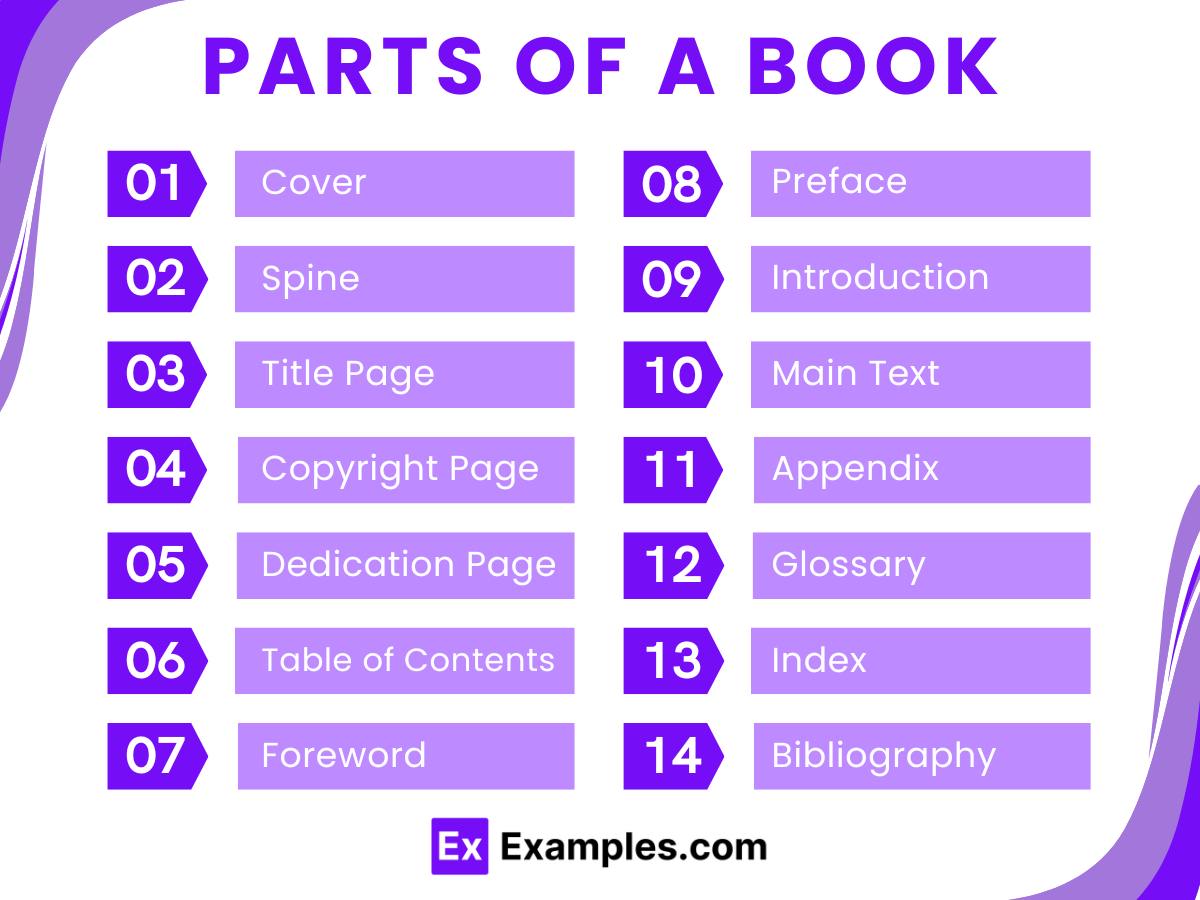
Books are composed of various parts, each serving a specific function. Understanding these parts can enhance your reading experience and help you better navigate the content. Here are the primary parts of a book:
1. Cover
- Front Cover: The front of the book, often featuring the title, author’s name, and an illustration or design.
- Back Cover: Usually contains a summary or blurb about the book, author’s biography, and publisher’s information.
2. Spine
- The part of the book that connects the front and back covers, displaying the title, author’s name, and sometimes the publisher’s logo.
3. Title Page
- The first page of the book, displaying the title, subtitle (if any), author’s name, and publisher’s name.
4. Copyright Page
- Typically follows the title page and includes copyright information, edition details, publication date, ISBN, and sometimes acknowledgments of permissions.
5. Dedication Page
- A page where the author dedicates the book to someone special, such as a friend, family member, or influential person.
6. Table of Contents
- A list of chapters or sections in the book, along with their page numbers, providing a roadmap of the book’s structure.
7. Foreword
- An introduction written by someone other than the author, often a notable person in the field, providing context or endorsement.
8. Preface
- Written by the author, the preface discusses the inspiration, purpose, and scope of the book, and may include acknowledgments.
9. Introduction
- An overview of the book’s content, themes, and objectives, setting the stage for the main text.
10. Main Text
- The core content of the book, divided into chapters or sections, where the main narrative or information is presented.
11. Chapters
- Divisions within the main text, each focusing on a specific topic or part of the narrative.
12. Epilogue
- A concluding section that wraps up the story or provides additional information following the main text.
13. Appendix
- Supplementary material that provides additional details, data, or resources relevant to the main text but not included within it.
14. Glossary
- A list of terms used in the book, along with their definitions, helping readers understand specific jargon or concepts.
15. Index
- An alphabetical listing of topics, names, and subjects covered in the book, along with page numbers where they are mentioned, aiding in quick reference.
16. Bibliography
- A list of sources, references, and further reading materials cited in the book, providing readers with resources for further exploration.
17. Acknowledgments
- A section where the author expresses gratitude to those who contributed to the creation of the book, such as editors, researchers, and supporters.
18. Author’s Biography
- A brief section about the author’s background, other works, and achievements, often found at the end of the book or on the back cover.
Benefits of Reading Books
Reading books offers numerous benefits, enriching our lives in many ways. Here are some key advantages:
1. Enhances Knowledge
- Expands Horizons: Learn about different cultures, histories, and perspectives.
- Deepens Understanding: Gain a better grasp of complex topics.
2. Stimulates the Mind
- Keeps the Brain Active: Reduces the risk of cognitive decline.
- Improves Focus: Enhances concentration and attention span.
3. Reduces Stress
- Provides Escape: Offers a mental break from daily stress.
- Promotes Relaxation: Helps calm the mind and improve sleep.
4. Boosts Vocabulary and Language Skills
- Expands Vocabulary: Introduces new words and phrases.
- Improves Writing: Enhances writing skills by exposing readers to different styles.
5. Enhances Empathy and Emotional Intelligence
- Understanding Perspectives: Helps readers see the world through others’ eyes.
- Improves Emotional Awareness: Deepens understanding of emotions.
6. Increases Knowledge Retention and Analytical Thinking
- Strengthens Memory: Keeps track of details and plotlines.
- Boosts Critical Thinking: Sharpens analytical skills.
7. Provides Entertainment
- Enjoyable Pastime: Offers hours of pleasure.
- Diverse Genres: There’s a book for every taste.
8. Encourages Lifelong Learning
- Instills Love of Learning: Sparks curiosity.
- Self-Education: Allows independent learning.
9. Improves Mental Health
- Reduces Depression: Uplifting books can improve mood.
- Promotes Mindfulness: Focused reading encourages mindfulness.
10. Builds Community
- Book Clubs: Fosters social connections through shared reading.
- Shared Interests: Creates opportunities for bonding.
How to Choose the Right Book
Choosing the right book can enhance your reading experience. Here are some key tips:
1. Identify Your Interests
- Genres: Think about the genres you enjoy (e.g., mystery, romance, sci-fi).
- Topics: Consider subjects you’re curious about (e.g., history, science).
2. Read Reviews and Recommendations
- Online Reviews: Check websites like Goodreads and Amazon.
- Friends’ Suggestions: Ask friends and family for recommendations.
- Book Clubs: Join a book club for group recommendations.
3. Check Best-Seller Lists
- Popular Choices: Look at best-seller lists (e.g., The New York Times).
- Award Winners: Consider books that have won literary awards.
4. Read Sample Pages
- First Chapter: Read sample pages to see if the writing style and story engage you.
- Summaries: Read the book’s summary or blurb.
5. Consider the Author
- Favorite Authors: Look for new books by authors you like.
- Author Insights: Read interviews or listen to podcasts with the author.
6. Think About Your Mood
- Current Interests: Choose a book that matches your current mood or interests.
- Light vs. Heavy: Decide if you want a light read or something more profound.
7. Explore Bookstore and Library Displays
- Staff Picks: Check out staff recommendations.
- New Arrivals: Browse new releases.
8. Set Reading Goals
- Purpose: Determine if you’re reading for pleasure, learning, or personal growth.
- Length and Complexity: Choose a book that fits your available time and preferred complexity.
How to Create a Good Book Review
Creating a good book review involves several key steps to ensure your review is engaging, informative, and helpful for potential readers. Here’s a guide to help you craft a compelling book review:
1. Read the Book Carefully
- Ensure you read the entire book thoroughly.
- Take notes on key themes, characters, and plot points.
2. Understand the Book’s Purpose
- Identify the author’s primary goals.
- Consider the genre and how well the book fits within it.
3. Craft a Strong Introduction
- Start with a hook to grab the reader’s attention.
- Mention the book title, author, and a brief overview of the story without giving away spoilers.
4. Summarize the Content
- Provide a concise summary of the plot.
- Highlight the main themes and significant events.
- Avoid major spoilers to keep the review reader-friendly.
5. Analyze the Book
- Discuss the strengths and weaknesses.
- Evaluate the author’s writing style and effectiveness.
- Consider character development, plot structure, and pacing.
6. Share Your Personal Response
- Reflect on how the book made you feel.
- Discuss any personal connections or insights gained.
- Be honest but constructive in your critique.
7. Provide a Conclusion
- Sum up your overall thoughts and feelings about the book.
- Mention if you would recommend it and to whom (specific audience types).
8. Edit and Proofread
- Review your draft for clarity, coherence, and grammatical accuracy.
- Ensure your review is well-organized and flows smoothly.
How do I choose the right book to read?
Consider your interests, read reviews, and get recommendations from friends or book clubs to find a book that matches your preferences and mood.
What are the benefits of reading books?
Reading improves knowledge, stimulates the mind, reduces stress, enhances vocabulary, fosters empathy, and provides entertainment and mental stimulation.
How can I improve my reading habits?
Set aside dedicated reading time, join a book club, set reading goals, and always carry a book with you to read during spare moments.
What is the difference between fiction and non-fiction?
Fiction contains imaginary stories and characters, while non-fiction is based on factual information and real events.
How do I write a book review?
Summarize the plot, share initial impressions, analyze characters, evaluate writing style, discuss themes, highlight strengths and weaknesses, and conclude with a recommendation.
What is the best way to take notes while reading?
Use sticky notes, highlight key passages, summarize chapters, and jot down thoughts or questions in a separate notebook for better comprehension and retention.
How do I join a book club?
Search for local or online book clubs that match your interests, attend meetings, participate in discussions, and share your insights and opinions.
How can I find time to read more books?
Incorporate reading into your daily routine, such as during commutes, before bed, or during lunch breaks, and set aside specific times dedicated to reading.
What are the different genres of books?
Genres include fiction, non-fiction, fantasy, science fiction, mystery, romance, thriller, historical fiction, drama, and more, each offering unique experiences and themes.
How can I improve my speed reading skills?
Practice regularly, use a pointer to guide your eyes, eliminate subvocalization, focus on key words, and gradually increase your reading pace without sacrificing comprehension.




